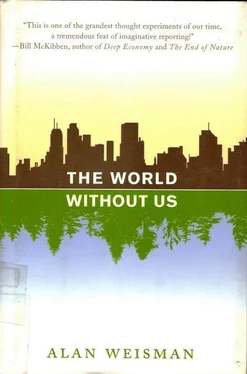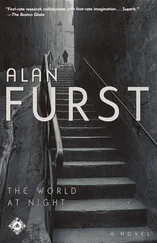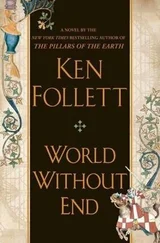“But the quality of the concrete,” Mete Sözen told the Turkish government, “is 1/10 of what you’d find in, say, Chicago. Strength and quality of concrete depend on the amount of cement used.”
Back then, the problem was economics and availability. But as Istanbul’s population grew, the problem did, too, with more floors added to accommodate more humans. “The success of a concrete or masonry building,” Sözen explained, “depends on how much you have to support above the first level. The more floors, the heavier the building.” The danger comes when residential stories are stacked on top of structures whose ground floors are used for shops or restaurants. Most are open commercial spaces that lack internal columns or load-bearing walls because they were never intended to support more than one story.
Complicating matters further, floors added as afterthoughts rarely align in adjacent buildings, placing uneven stress on shared walls. Worse still, Sözen said, is when space is left at the top of a wall for ventilation, or to save material. When a building sways during an earthquake, exposed columns in partial walls shear off. In Turkey, hundreds of schools have just such a design. Wherever air-conditioning is unaffordable in the tropics, from the Caribbean to Latin America to India to Indonesia, these extra spaces are especially common as a way to bleed off heat and invite breezes. In the developed world, the identical weakness is often found in structures without climate control, such as parking garages.
In a 21st century where more than half the human race lives in cities and where most people are poor, cheap variations on the theme of reinforced concrete are repeated daily: planet-wide piles of low bids that will come crashing down in a posthuman world, and do so even faster if the city is near a fault line. When an earthquake strikes Istanbul, its narrow, winding streets will clog so totally with the rubble of thousands of wrecked buildings, Sözen estimates, that much of the city will simply have to close down for 30 years before the massive destruction can be cleared away.
Assuming there is anybody to do the clearing. If not, and if Istanbul remains a city where snow regularly falls in the winter, then freeze-thaw cycles will have plenty of earthquake detritus to reduce to sand and soil above the cobbles and pavement. Every earthquake causes fires; in the absence of response crews, the grand old wooden Ottoman mansions along the Bosphorus will contribute the ash of long-extinct cedars to the formation of new soil.
Although mosque domes, like the Hagia Sophia’s, will initially survive, the shaking will have loosened their masonry, and freeze-thaw will work at their mortar until bricks and stones start to fall. Eventually, as in 4,000-year-old Troy 175 miles down Turkey’s Aegean coast, only Istanbul’s roofless temple walls will remain—still standing, but buried.
Should Istanbul exist long enough to complete its planned subway system—including a line under the Bosphorus that would link Europe and Asia—since its tracks will cross no fault line, it will probably remain intact, albeit forgotten, long after the city on the surface is gone. (Subways whose tunnels do encounter geologic faults, however, such as the San Francisco Bay Area’s BART and New York City’s MTA, may face another fate.) In the Turkish capital of Ankara, the subway system’s central nerve core broadens into an extensive underground shopping district with mosaic walls, acoustic ceilings, electronic billboard screens, and arcades of stores—an orderly underworld compared to the cacophony of the streets above.
Ankara’s sub-surface shops; Moscow’s subway, with its deep train tunnels and chandelier-lit, museum-like underground stations, renowned as some of the most elegant spots in the city; Montreal’s subterranean village of shops, malls, offices, apartments, and labyrinthine passages that reflect the city in miniature and link its old-fashioned surface structures—all these underground creations stand the best chance of any man-made edifices of lasting into whatever hereafter lies beyond human existence on Earth. Although seepage and surface cave-ins will eventually reach them, buildings still exposed to the elements will go well before structures that were born already buried.
These won’t be the oldest, however. Three hours south of Ankara is a region of central Turkey whose name, Cappadocia, ostensibly means “Land of Fine Horses.” But that has to be a mistake: the result, possibly, of some garbled pronunciation of a more fitting description in some ancient tongue, because not even winged horses could steal the spotlight from this landscape—or from what lies beneath it.
In 1963, a fresco now thought to be the oldest landscape painting on Earth was discovered in Turkey by University of London archaeologist James Mellaart. Between 8,000 and 9,000 years old, it is also the oldest known work rendered on a surface constructed by humans: in this case, a mud-brick plastered wall. Overtly two-dimensional, the eight-foot mural is a flattened image of an erupting, double-coned volcano. Out of context, its components make little sense: The volcano itself, painted with ochre pigments worked into wet lime plaster, could be mistaken for a bladder, or even two disembodied breasts—in this case, the teats of a female leopard, as they are curiously flecked with black spots. The volcano also seems to be perched directly atop a pile of boxes.
From the vantage point of where it was discovered, however, its meaning is unmistakable. The double-barreled volcano’s shape matches the silhouette of 10,700-foot Hasan Dağ 40 miles to the east, a long swoop of a mountain that hangs over central Turkey’s high Konya plain. Together, the boxes form a primitive town plat of what many scholars consider the world’s first city, Çatal Höyük, which is twice as old as the pyramids of Egypt—and, with a population around 10,000, was far bigger than its contemporary, Jericho.
All that remained of it when Mellaart began digging was a low mound rising above wheat and barley fields. The first things he found were hundreds of obsidian points, which may explain the black spots, as the Hasan Dağ volcano was the source for that substance. But for reasons unknown, Çatal Höyük had been abandoned. The mud-brick walls of its house-sized boxes had fallen in on themselves, and erosion smoothed the rectangles of its skyline into a gentle parabola. Another 9,000 years, and the parabola should be long flattened.
On Hasan Dağ’s opposite slope, however, something quite different happened. What is now called Cappadocia began as a lake. During millions of years of frequent volcanic eruptions, its bowl filled with layers of ash that kept piling on, hundreds of feet deep. When the cauldron finally cooled, these congealed into tuff, a rock with remarkable properties.
A huge, final burst 2 million years ago unrolled a mantle of lava that left a thin crust of basalt atop 10,000 square miles of powdery gray tuff. When it hardened, so did the climate. Rain, wind, and snow set to work, with freeze-thaw cycles cracking and splitting the basalt pavement, and moisture seeping in to dissolve the tuff below. As it eroded, in places the ground collapsed. Left standing were hundreds of pale, slender pinnacles, each mushroom-capped with a hood of darker basalt.
Tourism promoters call them fairy towers, a plausible descriptor but not necessarily the first one that comes to mind. The magical version prevails, however, because the surrounding tuff hills have invited not just wind and water to sculpt them, but also the hands of imaginative humans. Cappadocia’s towns have not been built so much on the land, as in it.
Tuff is soft enough that a determined prisoner here could scoop his way out of a dungeon with a spoon. When exposed to air, however, it hardens, forming a smooth, stucco-like shell. By 700 BC, humans with iron tools were burrowing into Cappadocia’s escarpments, and even hollowing out fairy towers. Like a prairie dog village tipped on its side, every rock face was soon riddled with holes—some big enough for a pigeon, or a person, or a three-floor hotel.
Читать дальше











